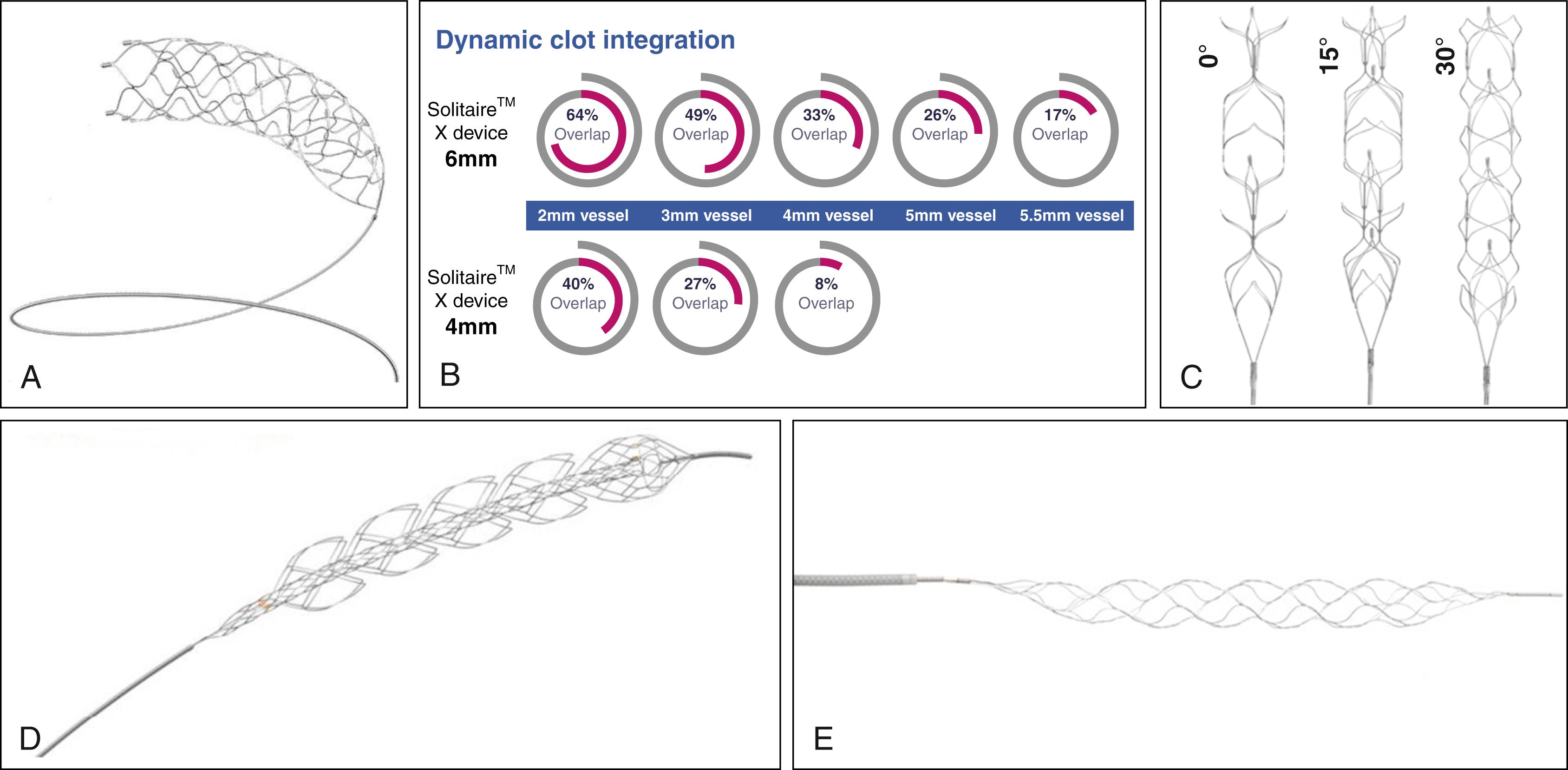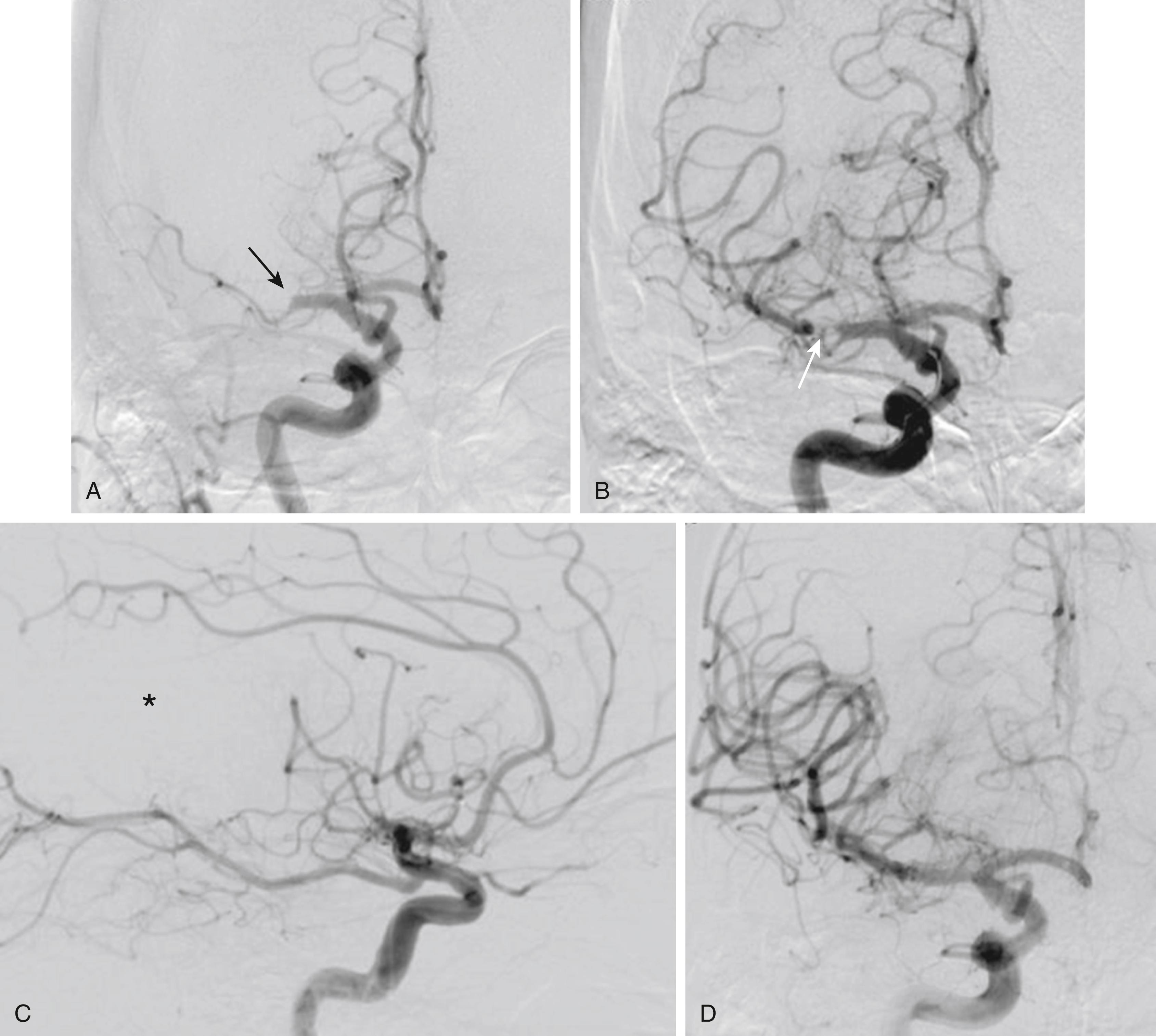Physical Address
304 North Cardinal St.
Dorchester Center, MA 02124
Large vessel occlusion (LVO) acute ischemic stroke (AIS) is a major cause of disability and mortality.
Intravenous (IV) tissue plasminogen activator (tPA), approved nearly two decades ago for the treatment of AIS, has low rates of recanalization for the treatment of LVO-AIS.
In five major randomized trials, endovascular treatment of LVO-AIS showed an overwhelmingly superior benefit over IV tPA alone when endovascular mechanical thrombectomy (MT) was combined with IV tPA.
Based on the available evidence, the American Heart Association/American Stroke Association guidelines endorse the use of IV recombinant tissue plasminogen activator (IV rtPA) in combination with MT in patients above 18 years of age with AIS of <6 hours’ duration, with LVO confirmed with vascular imaging, a National Institutes of Health stroke scale (NIHSS) score above 6, and Alberta Stroke Program Early CT score (ASPECTS) above 6.
The benefit of MT in the distal middle cerebral artery (beyond the M1 segment), posterior circulation, and in anterior cerebral artery occlusions is unknown. In addition, the benefits of treatment for patients with tandem occlusions, low ASPECTS, and in pediatric patients is unknown. Trials focusing on this population of patients are needed.
The guidelines also recommend the use of stent retrievers as the first-line devices; however, other techniques, such as aspiration thrombectomy, may be useful in certain situations.
Additional recommendations to ensure best patient outcomes include faster door-to-recanalization time, the angiographic goal of Thrombolysis in Cerebral Infarction 2b-3, and development of comprehensive stroke centers capable of performing MT.
Acute ischemic stroke (AIS) due to large vessel occlusion (LVO) is a common and devastating form of brain ischemia. LVOs block large proximal intracranial arteries, including the internal carotid artery (ICA), M1 segment of the middle cerebral artery (MCA), the vertebral artery (VA), and the basilar artery (BA). Because LVOs reduce blood flow to more extensive brain regions than occlusions of medium or small vessels, patients with LVO-AIS have more severe presenting deficits, worse functional outcomes, greater hospital costs, and elevated mortality. In fact, although LVOs cause 39% of all ischemic strokes, they produce 62% of all post-ischemic stroke dependency and 96% of all post-ischemic stroke mortality.
Intravenous thrombolysis (IVT) alone is of only modest benefit for patients with LVO-AIS. The large thrombus burdens of LVOs resist rapid dissolution by pharmacologic thrombolysis; therefore LVOs reperfuse with IVT alone far less often than medium and small vessel occlusions. , Recanalization rates are estimated at 30% for occlusions of the M1 segment of the MCA and the BA and at 10% for occlusions of the intracranial ICA. As a result, best estimates are that IVT alone averts functional dependence in only 1 of every 11 treated LVO-AIS patients.
Endovascular recanalization therapy (ERT) techniques have been developed as a complementary or alternative approach to IVT for recanalization in LVO-AIS patients over the past 35 years, first with catheter-based intra-arterial instillation of lytic drugs directly into intracranial thrombi and then with catheter-based mechanical retrieval and aspiration devices. , The goal of intra-arterial treatments is rapid recanalization of the occluded vessel with reperfusion of the brain tissue and potential salvage of at-risk tissue, such as the penumbra. Trials using intra-arterial delivery of thrombolytic drugs and first-generation thrombectomy devices found no benefit over IVT alone. These trials were limited by long delays in the initiation of procedures after patient arrival, failure to require vascular imaging confirmation of presence of a target occlusion in two of the three studies, and low reperfusion rates, reflecting the only moderate technical recanalization efficacy of early endovascular approaches. The introduction of second-generation mechanical reperfusion devices in 2012, first with stent retrievers, was pivotal to the adoption of ERT, facilitating improved reperfusion in eligible patients and superior clinical outcomes compared with first-generation devices. , Recent trials—using better care organization, with faster times from door to arterial puncture; advanced imaging, including vascular studies for patient selection; and highly effective stent retrieval and aspiration devices—have demonstrated the substantial benefit of ERT, rendering it now the standard of care for eligible patients with LVO. This chapter presents a comprehensive review of recent clinical trials and discusses the current status of endovascular treatment in AIS.
Initial work on the endovascular treatment of AIS was based on the intra-arterial administration of thrombolytic agents into the clot. Since then, endovascular techniques for AIS treatment have tremendously improved, advancing to first-generation mechanical thrombectomy devices (e.g., the Merci clot retriever) and more recently to second-generation mechanical thrombectomy devices (stent retrievers and specialized aspiration catheters) ( Fig. 67.1 ). Indeed, the success of endovascular thrombectomy is largely due to the development of these newer-generation devices. , The following paragraphs briefly review the salient features of second-generation thrombectomy devices and their use in endovascular recanalization procedures.

Commonly used stent retrievers that are currently available include the Solitaire FR (Medtronic Neurovascular, Irvine, CA), Trevo ProVue (Stryker Neurovascular, Kalamazoo, MI), the EmboTrap II Revascularization Device (Cerenovus, J&J Medical Devices, New Brunswick, NJ) and the Penumbra 3D separator (Penumbra, Alameda, CA) (see Fig. 67.1 ). The first stent retriever to be developed was the Solitaire (Medtronic Neurovascular, Irvine, CA). , The Solitaire FR is unique in that it has an open-cell, so-called parametric design, which enables overlapping of the stent and thus provides multiple planes of clot integration within the device (see Fig. 67.1 ). The Trevo Pro Vue (Stryker Neurovascular) has a more traditional closed-cell design and provides full-length radiopacity to aid in placement of the device across the thrombus. The EmboTrap Revascularization Device (Cerenovus, J&J Medical Devices) has a unique design that includes an inner stent with a high radial force and an outer petal-shaped meshwork with a lower radial force (see Fig. 67.1 ). When the device is deployed, its inner stent is designed to create a robust patent channel through the occlusion, which restores blood flow to the ischemic penumbra immediately, whereas the outer meshwork has large inlets to maximize the amount of thrombus entrapped within the stent. The Penumbra 3D separator (Penumbra, Alameda, CA) differs from the aforementioned stent retrievers in that there is no stent. A larger portion of the separator by mass is designed to engage at the center of the vessel lumen rather than in an actual stent, where the material is primarily at the outer margins of the vessel near the intima. This specialized architecture is designed to minimize contact between the vessel wall and the inner chambers, where it is engineered to lock and trap clot for extraction.
Regardless of stent design, the technique of delivery involves crossing the thrombus with the microcatheter followed by introduction of the device into the microcatheter ( Fig. 67.2 ). The microcatheter is then retracted, unsheathing the stent retriever. The outward radial force of the stent retriever compresses the thrombus against the vessel wall, with an immediate restoration of blood flow. Furthermore, the metal struts of the stent-retriever embed within the clot to capture it for extraction. Typically, up to 5 minutes are allowed postdeployment and prior to retrieval, enabling the stent struts to expand sufficiently to engage the thrombus. This is followed by retraction of the stent and microcatheter as a single unit into a guide catheter to remove the clot. During retraction of the device, suction is applied to the guide catheter with either a pump or manual syringe to promote clot purchase and minimize the showering of emboli. To further reduce the possibility of distal emboli, use of a balloon guide catheter has been suggested. , The latter has a balloon placed at its distal end; with inflation, antegrade flow is arrested. With the application of suction during retrieval, flow is reversed, thus potentially minimizing distal embolic events. Several clinical studies have shown the benefit of the balloon guide catheter; however, no randomized trials have been conducted to show this definitively.

To minimize the distance that the stent retriever must travel while engaging the thrombus, especially into larger-caliber vessels such as the internal carotid artery (ICA) from the middle cerebral artery (MCA) and mitigating the possibility of losing purchase of the clot, variations to the stent retriever technique were developed with the incorporation of reperfusion catheters. For example, a large-bore reperfusion catheter can be advanced over a microcatheter and microwire up to the site of occlusion and left at the face of the thrombus. The stent retriever is then deployed and the microcatheter removed, leaving the stent retriever in place. The stent retriever is then pulled directly into the reperfusion catheter while aspiration with the reperfusion catheter is maintained, which would have been left in place in case repeat retrieval were necessary for recanalization. This technique has been referred to as the “Solumbra” technique, as it originally combined a stent retriever ( Sol itaire FR) with a Pen umbra aspiration catheter. ,
Direct aspiration has become possible owing to advances in catheter technology that allow large-caliber aspiration catheters to be advanced intracranially to the thrombus. They achieve vascular reperfusion by applying suction at the proximal portion of the thrombus and drawing it into the catheter lumen. In general, the largest aspiration catheter that the vessel can accommodate should be used. This technology was first developed by Penumbra Inc., with their collection of aspiration catheters. Since then, other device manufacturers have obtained approval from the US Food and Drug Administration (FDA) for their large intracranial aspiration catheters. More recently, an alternative technique has been used whereby the catheter is advanced into the proximal aspect of the clot and aspiration is applied to engage the thrombus ( Fig. 67.3 ). The catheter is then slowly withdrawn with the clot engaged at the tip of the catheter while aspiration is maintained to ensure that clot does not disengage during retrieval. Aspiration is also applied to the side port of the guide catheter to prevent dislodging the thrombus from the reperfusion catheter as it is withdrawn into the guide catheter. This technique has been referred to as a direct aspiration first-pass technique (ADAPT). ,
![Fig. 67.3, (A) Anteroposterior view of the left vertebral artery injection shows complete occlusion of the distal basilar artery (arrow) in this patient with acute ischemic stroke. (B) Unsubstrated image of the skull shows the tip of the large-bore catheter (arrow) , which has been advanced to the proximal face of the clot in the basilar artery. The figure insert in the right lower corner is a high-magnification view showing the tip of the large-bore catheter in position. Aspiration was applied to the large-bore catheter to engage the clot. Then, while maintaining aspiration to keep the clot engaged, the catheter was retrieved into a guide catheter in the proximal vertebral artery (a direct aspiration first-pass technique [ADAPT] technique). (C) Following retrieval, the clot is seen to be engaged within the tip of the large-bore catheter. Fig. 67.3, (A) Anteroposterior view of the left vertebral artery injection shows complete occlusion of the distal basilar artery (arrow) in this patient with acute ischemic stroke. (B) Unsubstrated image of the skull shows the tip of the large-bore catheter (arrow) , which has been advanced to the proximal face of the clot in the basilar artery. The figure insert in the right lower corner is a high-magnification view showing the tip of the large-bore catheter in position. Aspiration was applied to the large-bore catheter to engage the clot. Then, while maintaining aspiration to keep the clot engaged, the catheter was retrieved into a guide catheter in the proximal vertebral artery (a direct aspiration first-pass technique [ADAPT] technique). (C) Following retrieval, the clot is seen to be engaged within the tip of the large-bore catheter.](https://storage.googleapis.com/dl.dentistrykey.com/clinical/EndovascularTreatmentofAcuteIschemicStroke/2_3s20B9780323694247000673.jpg)
Become a Clinical Tree membership for Full access and enjoy Unlimited articles
If you are a member. Log in here